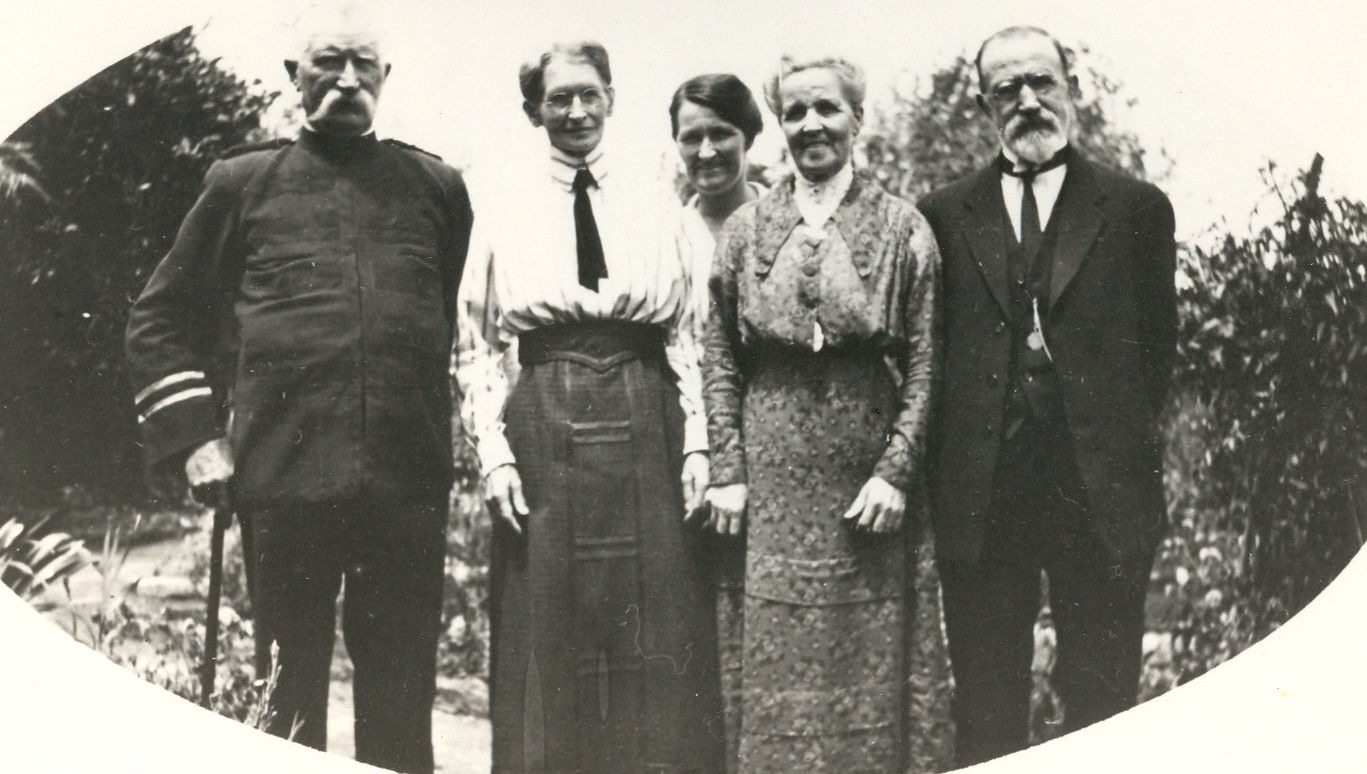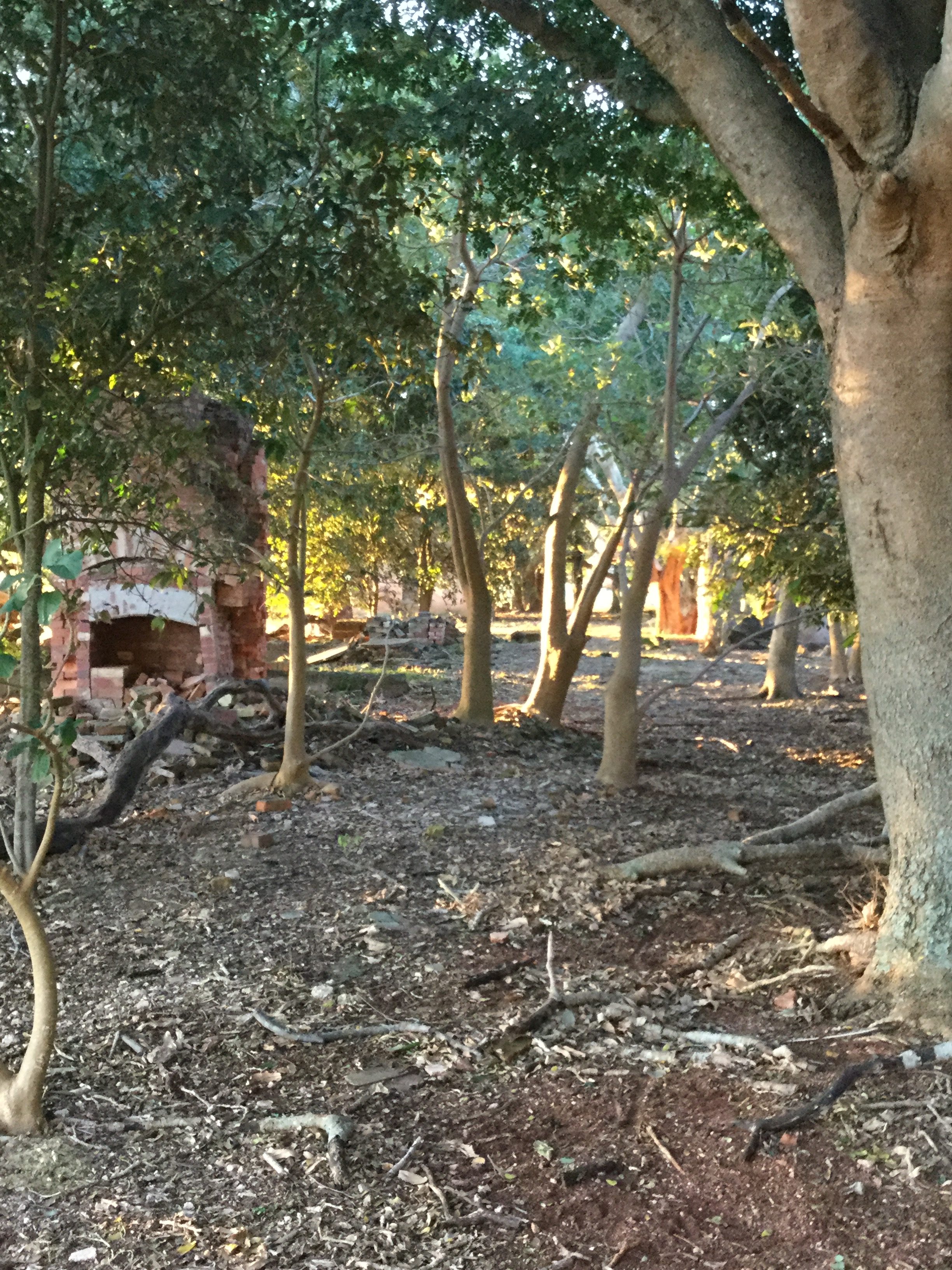Bob Jnr and Fred Murrie’smother Charlotte (nee McMunn) was one of the few women on St Helena Island in the 1910’s. Becoming Senior Warder in 1913 meant Bob Murrie Senior was allocated a small cottage, and was one of the few warders given permission to have his wife and children living with him on St Helena Island. This Mother’s Day, let’s celebrate the contribution of women to the unique lifestyle that evolved in St Helena Penal Establishment.

Despite marrying Charlotte Mc Munn in 1904 and having two sons, Bob Junior born in 1906 and Fred born in 1909, Robert Murrie Senior had always lived as a single warder in the barracks on St Helena Island. Bob Senior had already worked as a warder on St Helena Island from 1903 to 1905. In October 1908 the family were transferred back from Stewart’s Creek P.E. in Townsville, with Bob living on St Helena Island and Charlotte and her sons living in Brisbane. From the age of 4 to 12, between 1913 and 1921, they all lived on St Helena.
Fred Murrie recalled there were about 30 warders at this time, married and single, who lived in the barracks, each in their own room. The official residences were occupied by Superintendent James Ryan and his wife Elizabeth, and Chief Warder David Graham, his wife Mary Ann and their daughter Grace.

At the end of the row of 4 Warders’ married cottages was the Tailor Trade Instructor William Davies and the visitor’s house. There were no other children on the island at this time until the last 6 months, when Senior Warder William Cranch and his two sons came on to the island to replace Bob Murrie when he retired in 1921.

Isolation on an island impacted on the Murrie family in various ways. Education for both boys more difficult, as the St Helena Provisional School for children had ceased operation. Attempts were made by the family and the Penal Establishment tried to commit to boat transport to get Fred and Bob Jnr across the water to a school in Wynnum area. Unfortunately it did not eventuate as planned and Fred recalls that by aged 9 he and Bob were boarded out, restricting time on the island to holidays.

Charlotte’s daily life followed very specific rules as established by the Penal Establishment. Some food rations were supplied by the penal establishment, but most requirements were delivered by boat from the mainland. While the family could access basic medicine and treatment via the prison doctor, this was not always immediately available. Bob Jnr recalled a time his mother Charlotte was rushing at dinner time while putting a table cloth on. A sewing needle was stuck in the wood table top and it went into her hand and broke off. She panicked and the family took her to Warder Dispenser Henrey, who took care of all medical needs when there were no doctors on the island. Since it was 4 o’clock in the afternoon, she was placed on the Kangaroo Cart, and with warders powering it, quickly travelled down to the jetty, and onto the boat to Wynnum and to hospital.

Interaction with family and friends was managed carefully, but this is not to say they were completely cut off from people. When friends or family visited the Murrie’s they could stay with them for the weekend or a few days, usually going back Thursday. After 5 o’clock, when the prisoners were locked up, the Murrie family would take the visitors down to the lime kiln area to show them the sights.

Initially the Murrie family lived in a group of married cottages were semi-detached houses with one bedroom and a verandah on the front. Bob and Fred slept on the verandah. There was little vegetation around this house, as the cattle came around and ate it all. It was generally open with not many trees, and Bob recalled there was a jacaranda and mangoes and also 2 acacias outside the front gate of the Murrie’s house. The end house on Warder’s Row had the most ground – a garden with 3 peach trees, paw paws, vegetables and a fowl yard.
The fowls roamed about in the day time and Bob’s job was to count them back in at night. All the warder’s houses had their own poultry, but not in the prison.

Regardless of the lack of playmates, Bob and Fred took to exploring and enjoying their island playground. At the back of all semi-detached houses was a covered pathway to the kitchens out the back, about 30 feet beyond the house, just in front of a steep slope. The steep bank finished at the mangroves and mudflats, an area Bob and Fred played and saw as ‘a place of beauty.’ Bob remembered sliding down on sheets of galvanised iron until they hit mud and water below. Drains made of concrete were also embedded in the banks of the slope, where all the kitchen rubbish and water would be poured into, flowing out to sea. Bob and Fred managed to get lots of cannon balls, which they dropped into the drains and down the slope.
“The sentries in towers were watching with telescopes and would be onto you if you did the wrong thing.”
As well as their family and the friendships of other warders, the Murries were also assigned some prisoners whose role was to attend to their house and gardens. Bob recalled a prisoner called Tommy worked as the Murrie’s houseman and he taught Bob cards. Another prisoner, Victor Johnson was also the Murrie’s houseman, fixing bikes and was also an electrician fixing bells and other items. Prisoner Billy Bosely used to empty all the night tins from the warder’s residences every morning. Other prisoners also tended the vegetable gardens and cottage gardens around the house. Fred said they were never scared of prisoners because the warders were always looking out for them.

It’s a rare to have such a detailed record of a family’s life around 100 years ago. Thanks to her sons, Charlotte Murrie’s life remains woven in to the fabric of St Helena Island’s social history.
Sources:
Oral Recording, Bob and Fred Murrie, 1985, St Helena Island, sourced from Moreton Bay EEC
HMPE Prison – St Helena. Warders Defaulters Book 1867 – 1916, Qld State Archives
Qld Births Deaths Marriages Index


Fascinating Belinda! And I wonder if / how they celebrated Mothers Day back then. Was it a ‘thing’ 100 years ago?